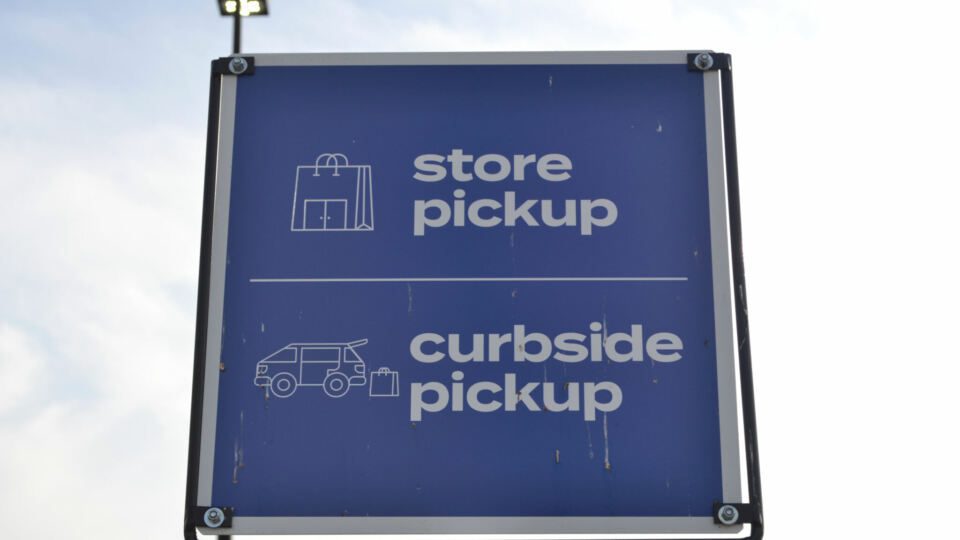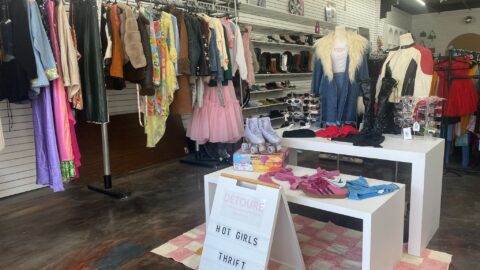In the pandemic’s wake, many retailers set up flexible fulfillment services in order to meet new safety guidelines and consumer requirements. From early 2020 to mid-2021, the percentage of retail chains offering curbside pickup surged from a miniscule 7% to a staggering 51%. Additionally, 66% of retail executives who responded to design:retail’s survey indicated that they spent time and capital updating the fronts of their stores to accommodate in-store pickup experiences.
The current challenge for many retailers, however, is recouping the “inordinate amount of CapEx” spent on implementing these experiences so quickly, according to Leon Nicholas, VP of Retail Insights & Solutions at WestRock. “Because of COVID, a lot of plans that were expected to take place over several years were immediately squeezed,” he explained in an interview with Retail TouchPoints. “And when you do things quickly, you don’t necessarily do things profitably.”
Nicholas believes that to make store fulfillment a truly profitable initiative, retailers need to find new ways for their tech, operations and design teams to collaborate. Currently, these groups exist in their own silos — a common challenge that still exists for most retail organizations. But with the rise of omnichannel fulfillment, “phygital” experiences and more elevated storytelling, Nicholas believes design is going to matter a lot more: “Not at the expense of functionality or technology, of course, but through and with those elements.”
Nicholas added that retailers will need to create a “synergy of these forces.” Technology, operations, fixtures, displays and the overall flow of the store will “have to be thought of together and at the same time. We’re finding that when you bring tech in at the end, or bring design in at the end, there’s a halt moment [where something goes wrong]. But when you bring these teams together, have collaboration sessions and everyone is in there together, those possible ‘halt moments’ get addressed at the outset.”
How can retail organizations create this sense of synergy when so many teams spend their daily lives isolated from each other? Moreover, how can retailers use the right combination of tech, ops and design to optimize the services and experiences they’ve invested so heavily in over the past year? Nicholas offered six best practices:
1. Create moments of collaboration: Before the fulfillment experience can truly be optimized, retailers need to get all the right people in the room and aligned on the objectives of the experience. After all, efficiency and engagement are two very different goals requiring very different mindsets. “The efficiency of the design tends to get the financial mindset while the engagement side tends to get the marketing mindset,” Nicholas explained. “These are very different types of people, but some retailers are trying to bring them together. Over the next decade, I think this will be a priority.”
Advertisement
Nicholas added that when these projects don’t start with a unified vision, it can lead to disjointed experiences that ultimately frustrate consumers. For example, a retailer may bring in the tech team to make sure QR codes work in-store, but if you don’t also have a branded, aesthetically pleasing experience to draw consumers in, the tech activation will likely get poor adoption and ROI.
2. Create moments of engagement: BOPIS and BORIS are certainly efficient, but they’re generally not profitable. When consumers can get in and out of stores as quickly as they need to, that means retailers miss out on opportunities to drive impulse purchases. In many pickup areas, there is barely any real estate open to include new fixtures or product displays to encourage those impulse browsing behaviors that so many retailers try to create. But moving forward, Nicholas believes that store fulfillment will only get more attention from finance teams, which means stores need to think about how they can drive layout and labor changes to support moments of engagement. He believes the next big step is to rethink the current, very sterile pickup environment and find ways to make it immersive and engaging for consumers, and that this is where design and visual merchandising can play invaluable roles.
3. Create moments of monetization: In cases where consumers don’t enter the store, Nicholas believes that tech, operations and marketing can work together to create moments of monetization. For example, many retailers rely on mobile technology to facilitate their curbside pickup operations. Consumers use the brand’s app or text messaging to confirm arrival and parking spot, so store employees are aware of their arrival. But what if associates had the power to send last-minute product recommendations before bringing an order out? Or what if marketing could send a push notification featuring frequently purchased items to ensure the consumer didn’t forget something? These are low-hanging fruit opportunities for monetization.
4. Create moments for automation: Some product needs can be fulfilled without even interacting with an associate at the counter or curbside. In CPG and electronics specifically, Nicholas has seen a surge in in-store vending machines and loaded kiosks, like those that many airports are now outfitting their terminals with. Retailers should tap customer data to understand what products are optimal for these automated commerce experiences and create spaces at the point of pickup to support education, engagement and interaction. “You have to have really good consumer data to understand the dynamics of impulse purchasing,” Nicholas explained, “but these are experiences that create prime merchandising moments and make that point of pickup more of a commercial opportunity, from the automated experiences themselves to the signage that surrounds them.”
Store designers also need to accommodate other areas of automation, such as self-checkout or “just walk out” experiences, which consumers are now increasingly demanding. Supporting this Amazon Go-style offering requires close alignment with tech to ensure the experience is implemented successfully. Nicholas added that rolling out these experiences also means less space used for checkout areas and POS tech, which could provide design and experience teams with more space to “play.”
5. Create moments of connected commerce: Perhaps one of the most seamless ways to drive more store revenue is to create more opportunities for people to discover and purchase products. Nicholas pointed to in-store tech activations as a prime way to do this, especially for highly visual categories like beauty. Consider digital signage and touchscreens that create opportunities for consumers to learn about new brands on aisle endcaps. This digital immersion allows them to dig deeper into a brand or product story, validate a purchase decision and maybe even purchase more from the brand online, but these “phygital” moments require the technology and visual design to operate in lockstep.
6. Create moments of opportunity: While Nicholas notes that this is only the beginning stages of a very long journey, he believes retailers have an opportunity to rethink the way tech, operations and design work together. Ultimately, the process would involve reimagining the roles retailers hire for within the organization. “Does your team have a vision for 2030 or 2035?” he asked. “Do you have the right people on your staff right now, or do you need a different sort of skill set to support this vision? I’m not saying designers have to be engineers, but you have to understand the role and space technology requires. What are you going to do with that space? What is the aesthetic and what are all of the functional components? Someone must think about all of this because otherwise it’s just a pickup location, which is an extremely unappealing experience.”









